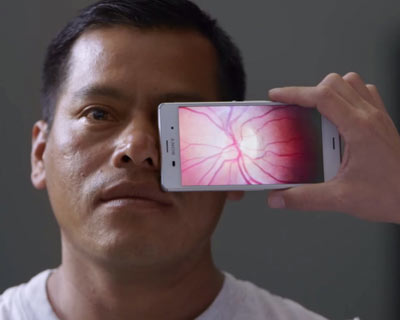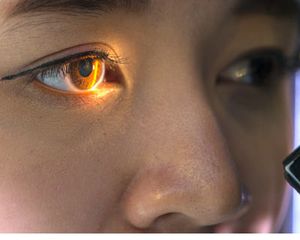Here’s a little known fact that may surprise you: eight out of 10 people worldwide who live with vision loss could have saved their sight through available treatment or preventive measures.
Vision impairment is a major public health issue all over the globe; preventing and treating vision loss are some of the most cost-effective interventions in healthcare. These are the key messages of World Sight Day 2016 on October 13.
About 285 million people worldwide live with impaired vision. The saying, “it takes a village,” is not an exaggeration when it comes to working toward eliminating blindness. Efforts to combat vision loss happen at many levels, in many places—from the halls of research facilities to the huts of remote eye clinics.
The history and evolution of understanding and restoring vision is the subject of an upcoming documentary slated for broadcast on Public Broadcasting Service (PBS) stations. Called “Sight: The Story of Vision,” it reveals the global impact of vision loss, and has people talking about future possibilities for a world free from blindness.
Tools to Help People See the World Around Them

Photo from Peek Vision
The last few years have seen remarkable technological advances in treating vision loss. For example, “bionic eyes” are now a reality in the form of retinal implant devices. Currently available for people with blinding retinitis pigmentosa (and in testing for people with dry AMD), the Argus II retinal implant system is restoring some useful vision for those with virtually none to speak of. The system uses a miniature video camera in eyeglasses to send visual information to a small computerized video processing unit (usually worn on a belt or carried in a pocket). This computer converts the image to electronic signals. Those signals are sent wirelessly to an electronic device implanted on the person’s retina. This allows the user to see patterns of light that the brain eventually learns to interpret as an image.
Marrying sophisticated technology with portability has given rise to low cost diagnostic tools for use in virtually any setting. Eye doctors now have smartphone-based options for testing vision in rural areas where traditional office eye exams are impractical or impossible.
 Yet not all successful eye health interventions rely on high tech. Even a simple eye chart is a vision-saving device. One of the most important steps in preventing vision loss is having access to basic eye exams and eye care services by trained professionals. When eye problems are found earlier in life, it can mean the difference between having or losing vision later.
Yet not all successful eye health interventions rely on high tech. Even a simple eye chart is a vision-saving device. One of the most important steps in preventing vision loss is having access to basic eye exams and eye care services by trained professionals. When eye problems are found earlier in life, it can mean the difference between having or losing vision later.
Simple Treatments Are Not Reaching People Who Need Them
A recent National Geographic magazine article juxtaposes today’s advanced vision research with the widespread challenges of providing even the most basic eye care. Having cataracts is a “disease of poverty,” according to the article, causing half of all blindness in the world today.
People in a developed country usually undergo cataract surgery as soon as their lifestyle is affected. But in developing parts of the world (such as Africa and India), millions of people go blind from this easily treated condition due to the lack of access to eye care.
Eye health advocates agree: ending worldwide blindness is a noble effort that requires not only finding new cures, but effectively delivering them.